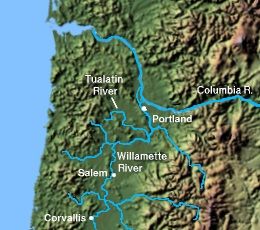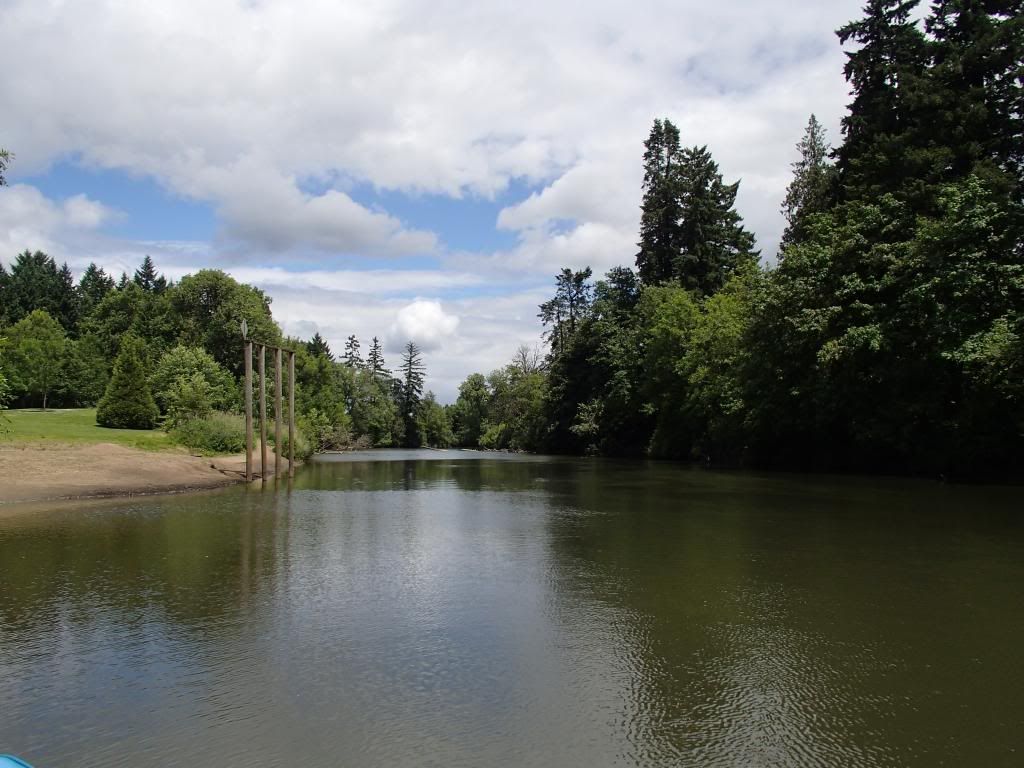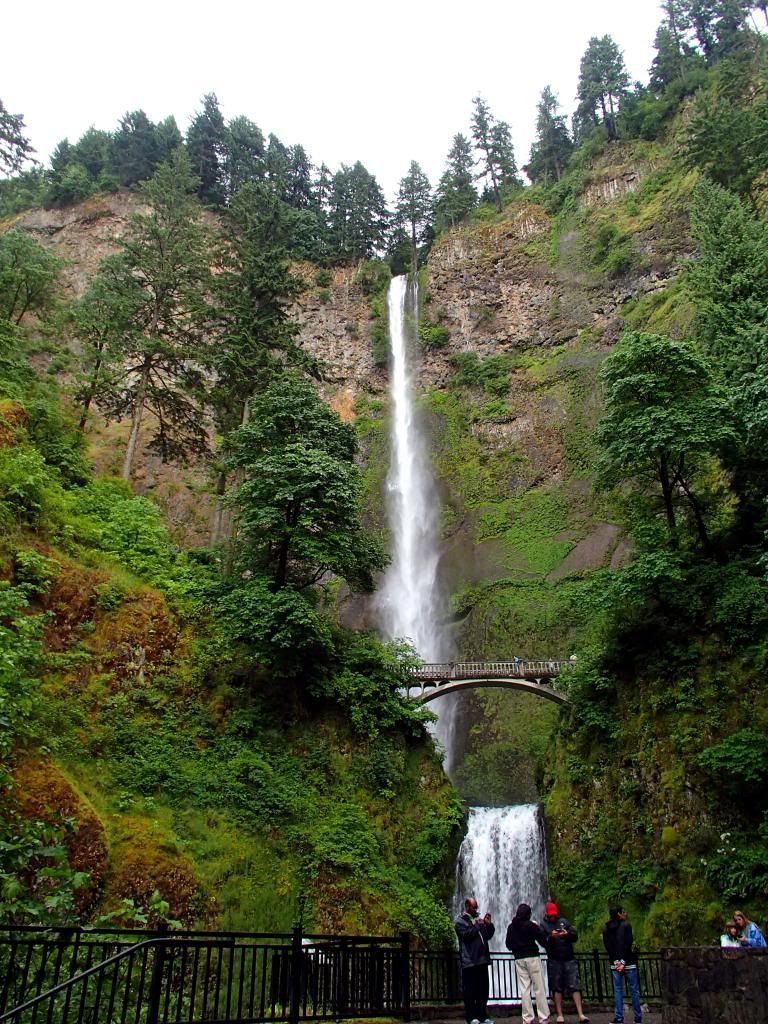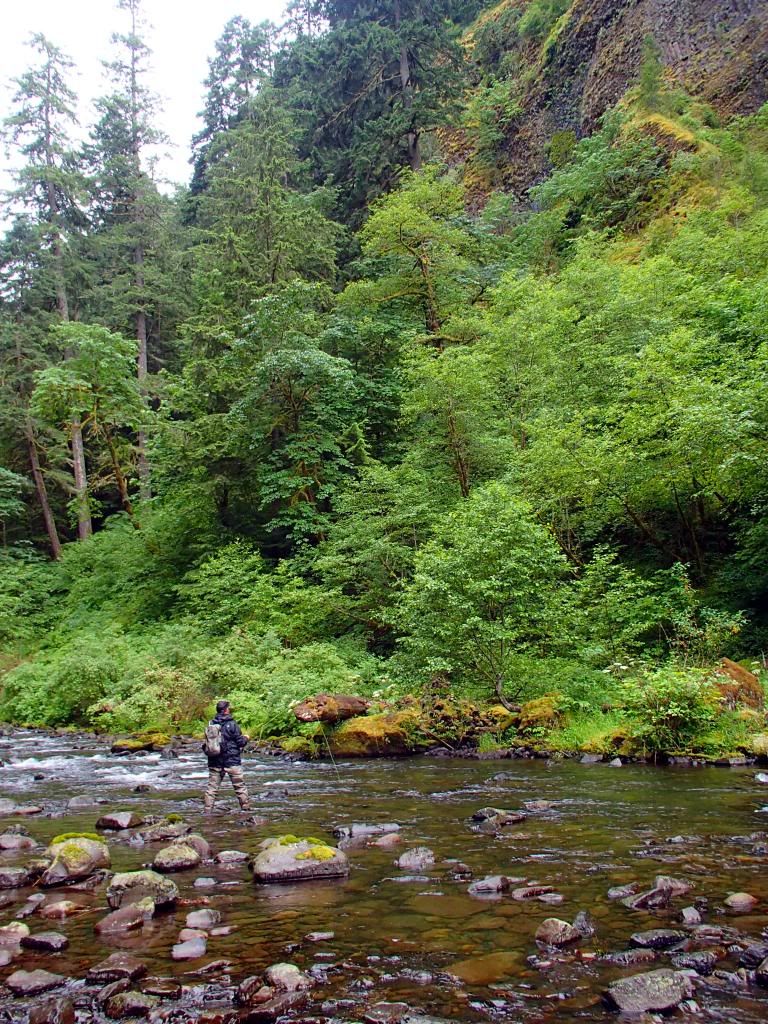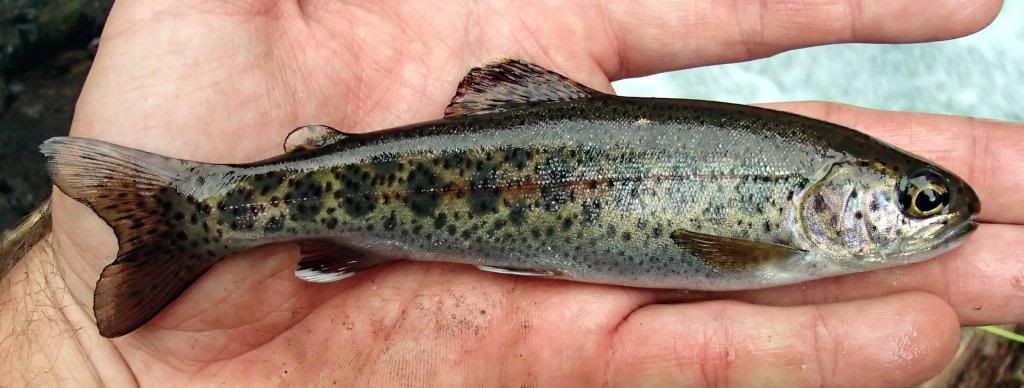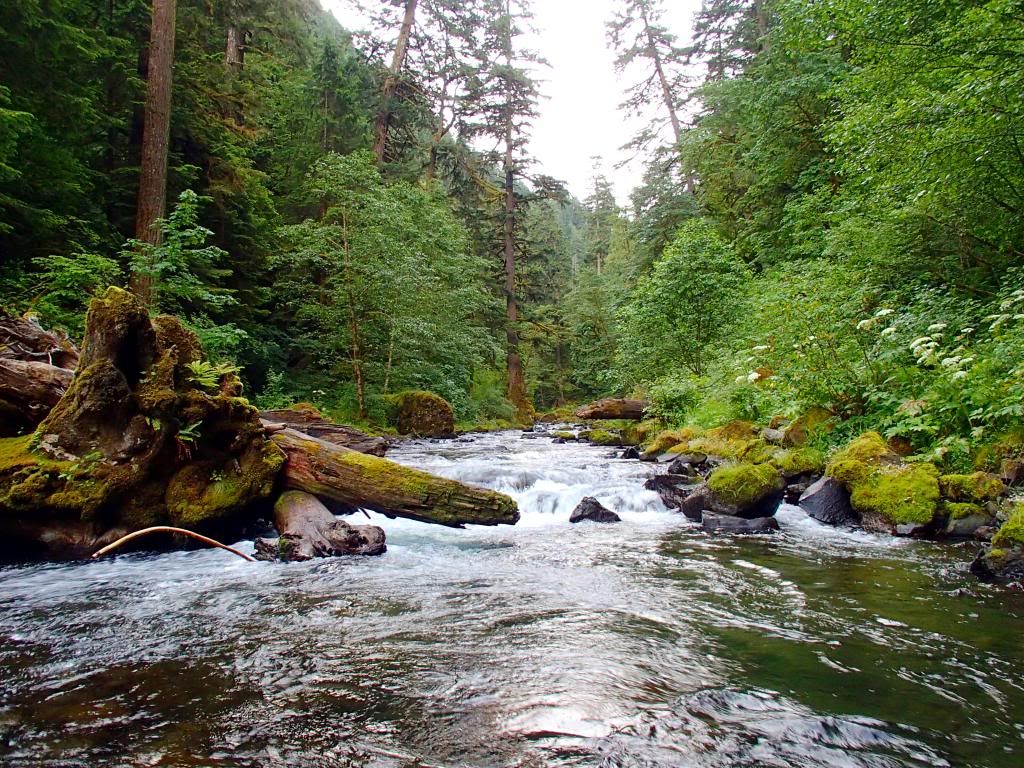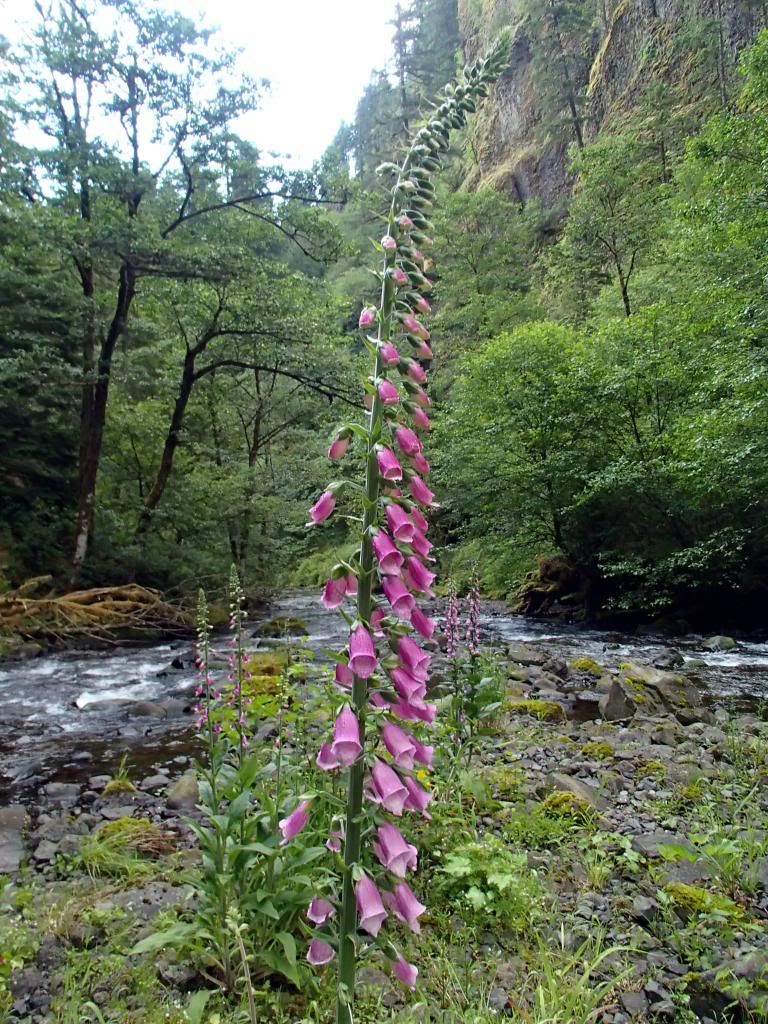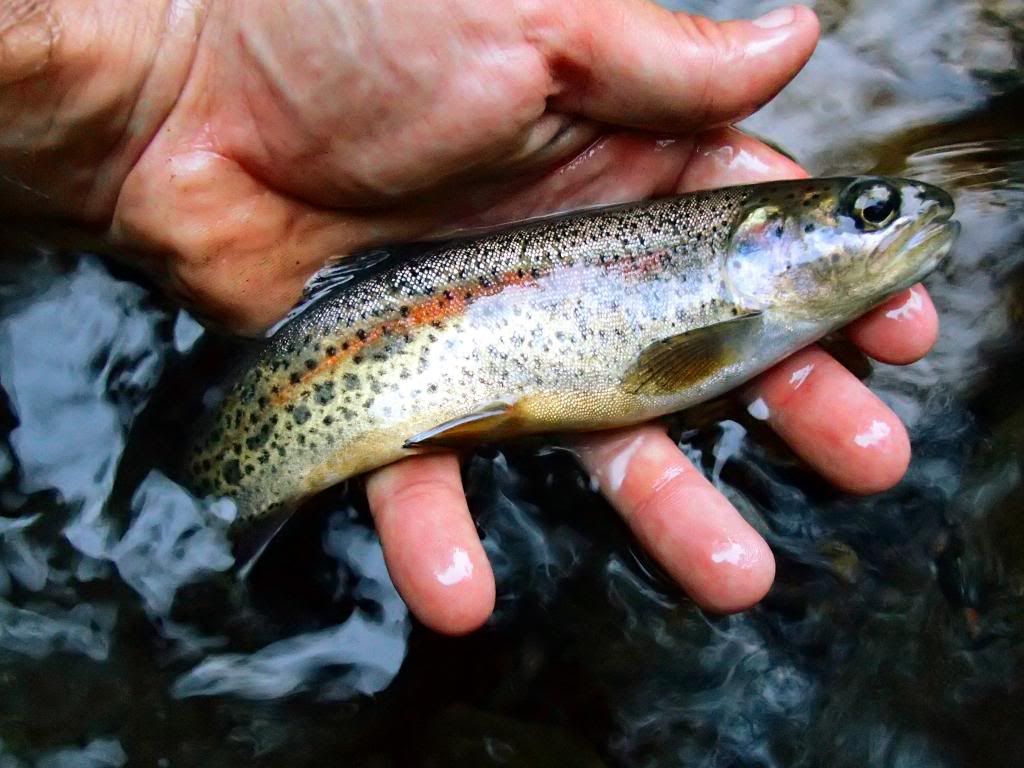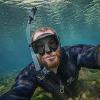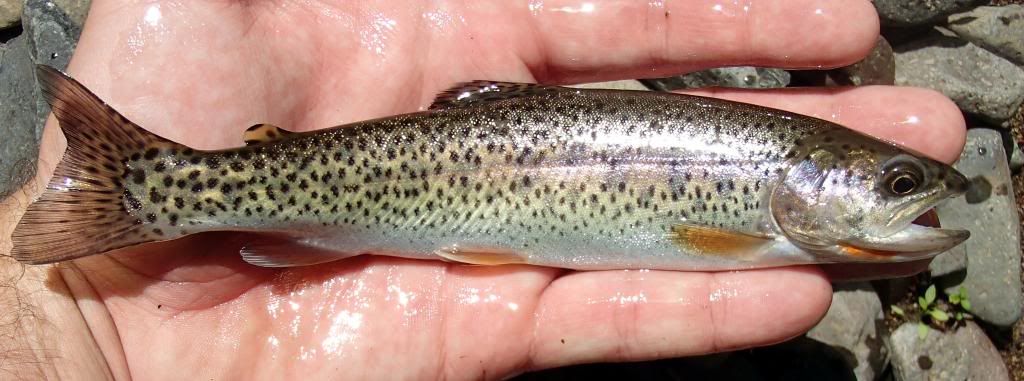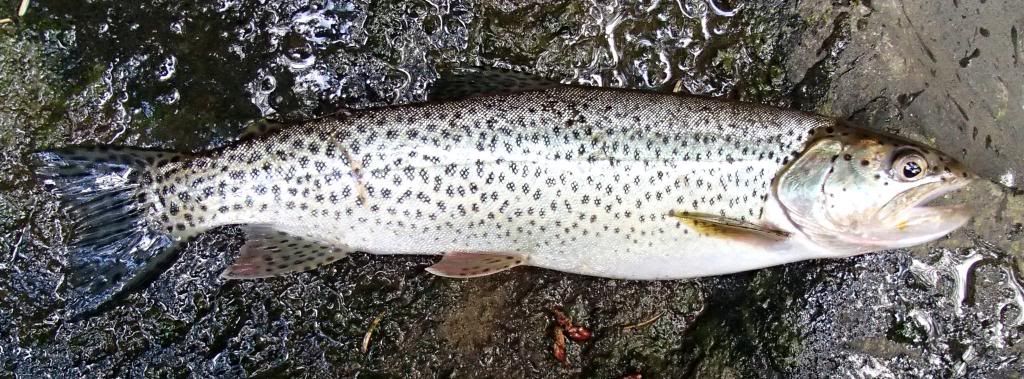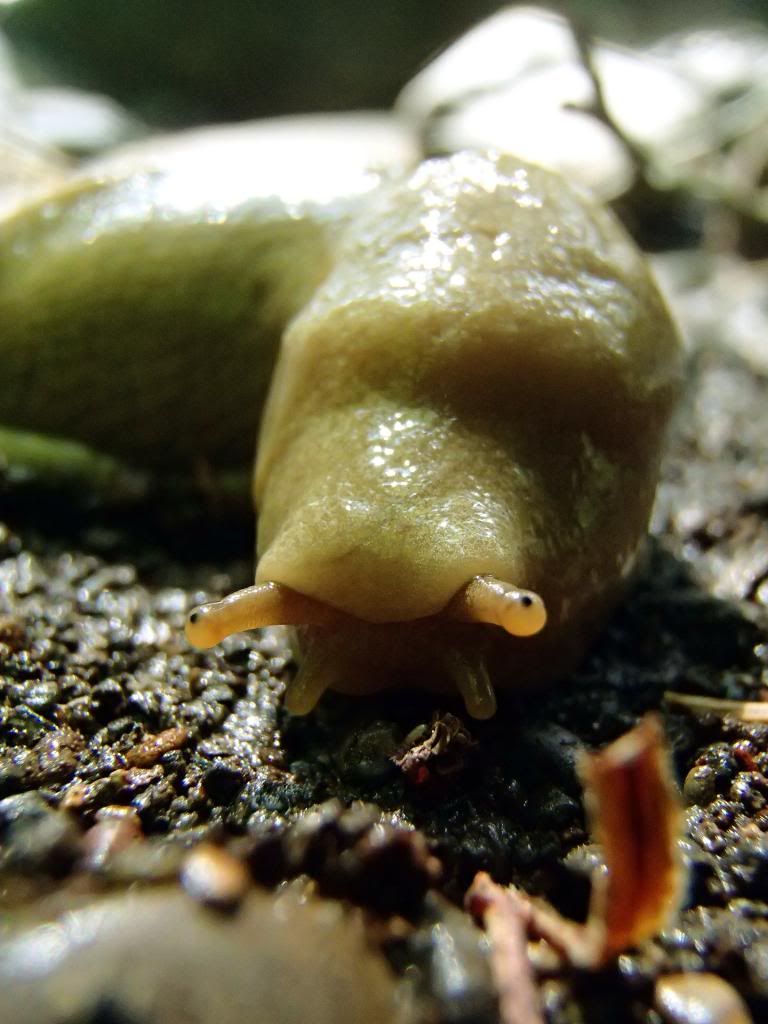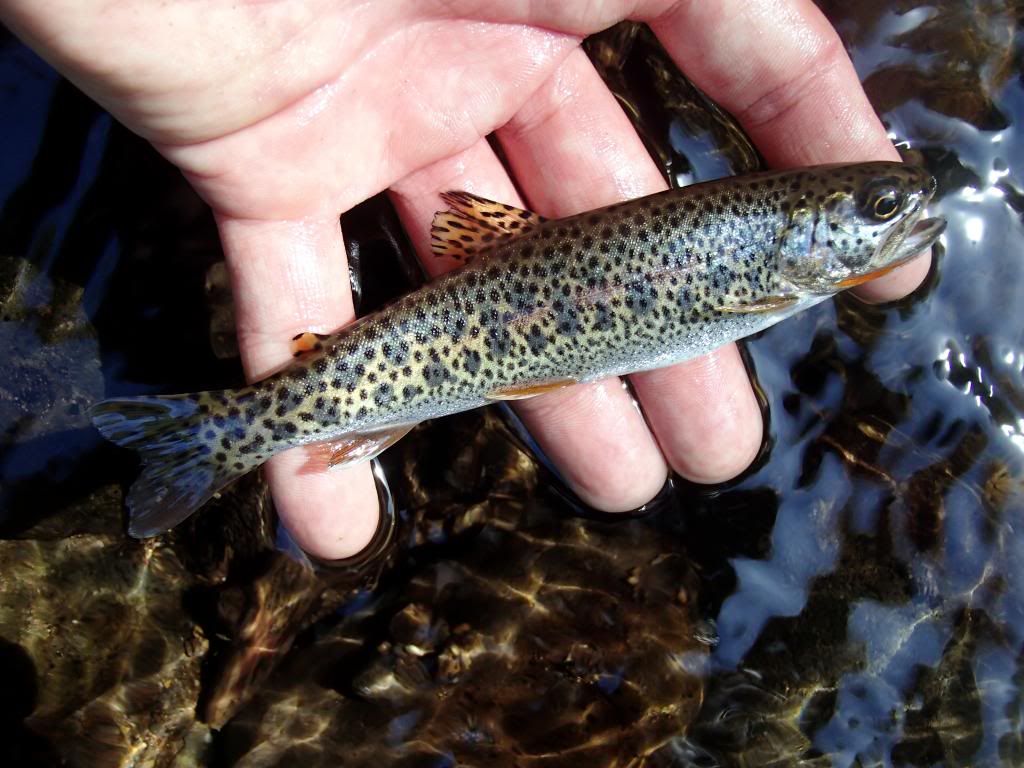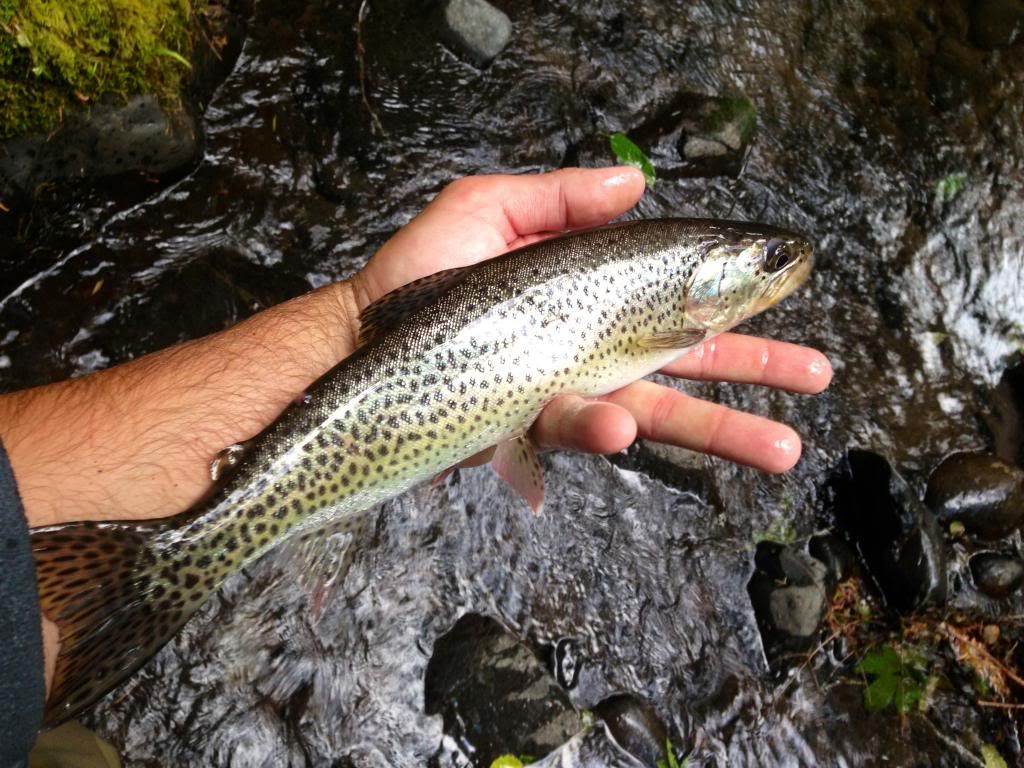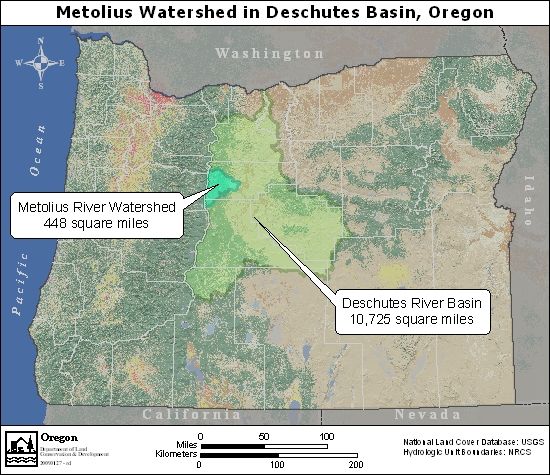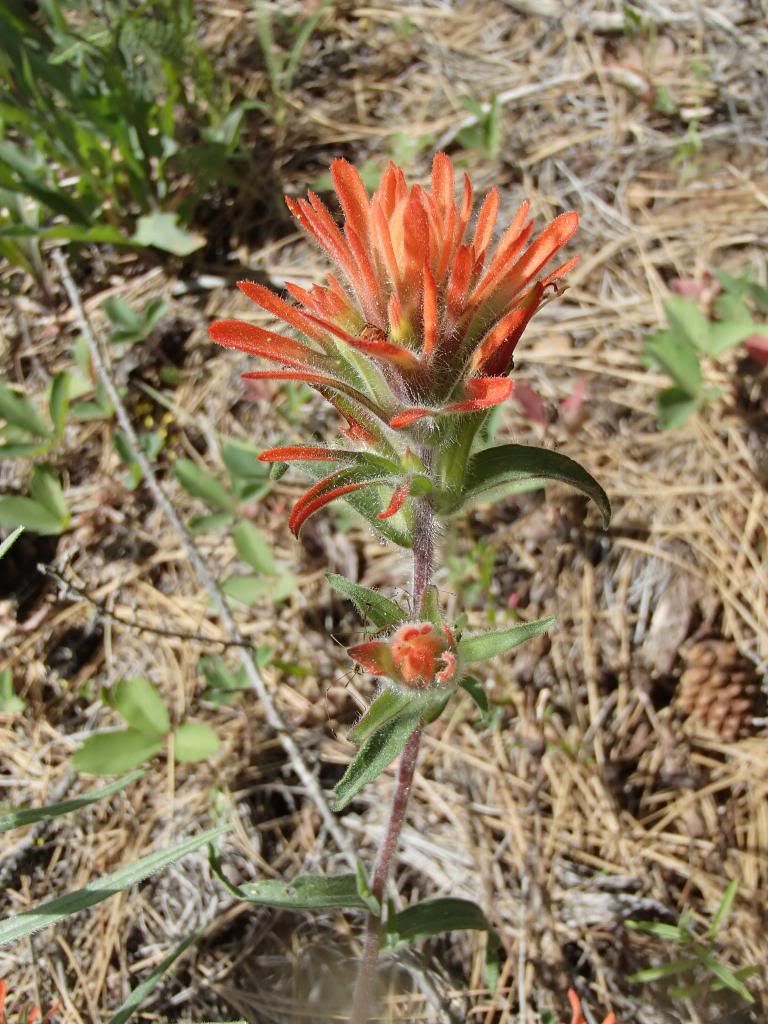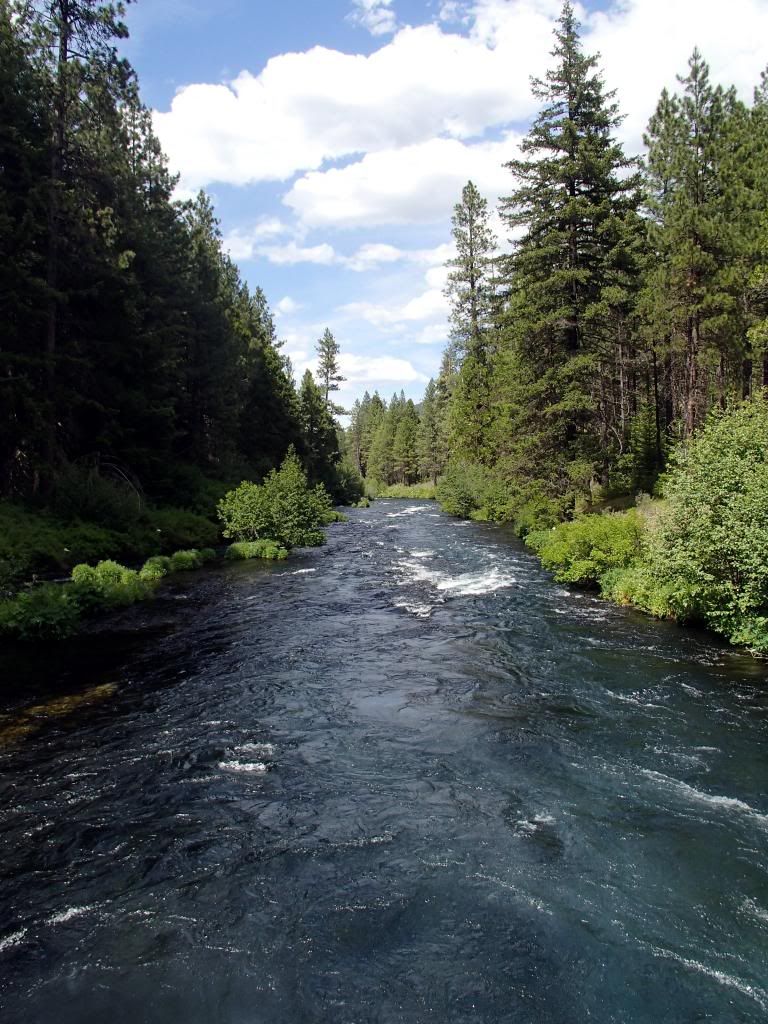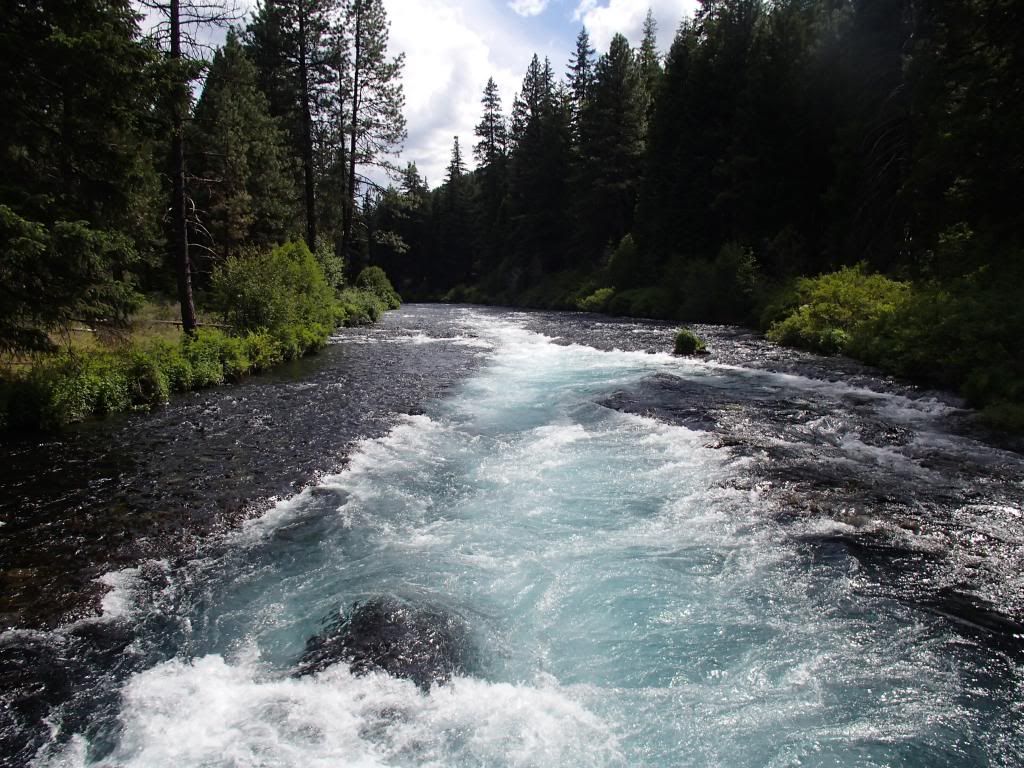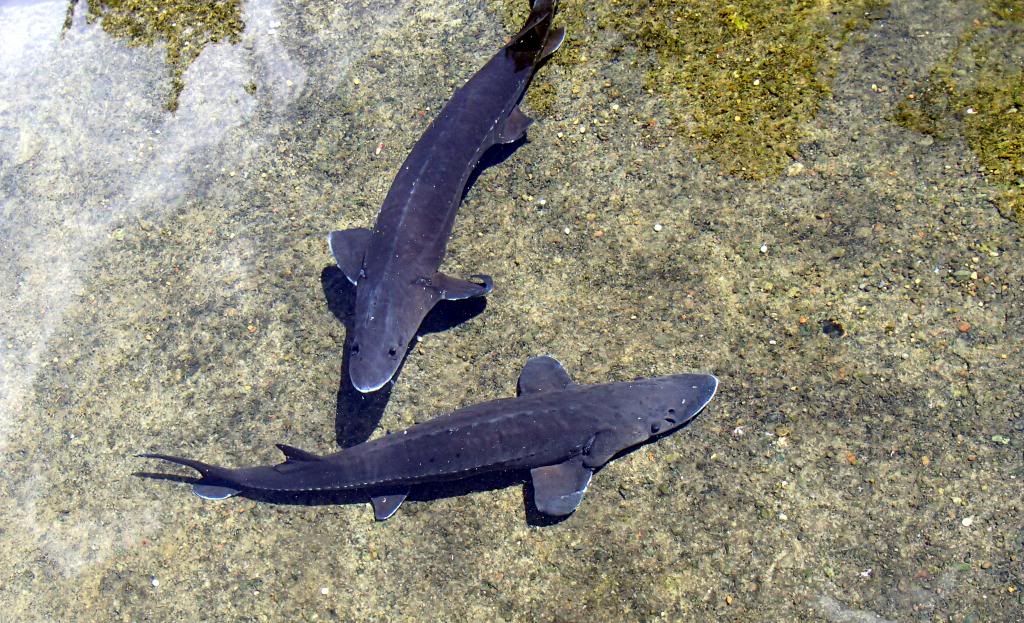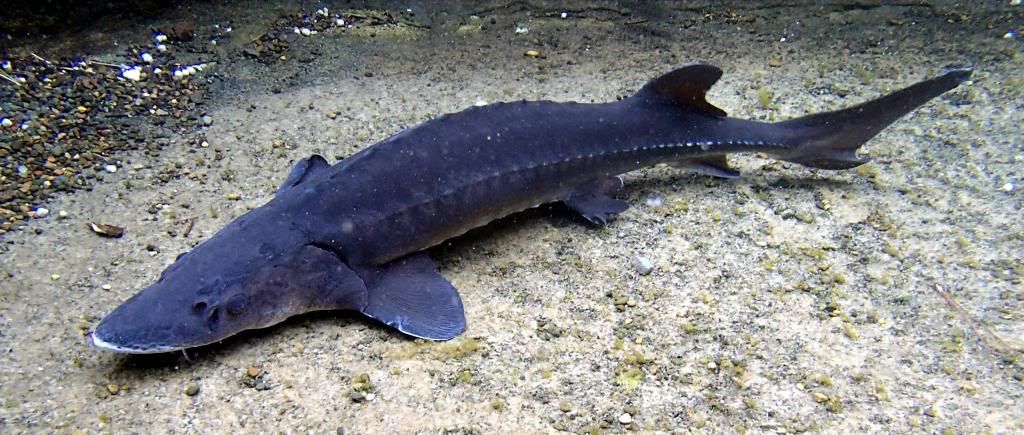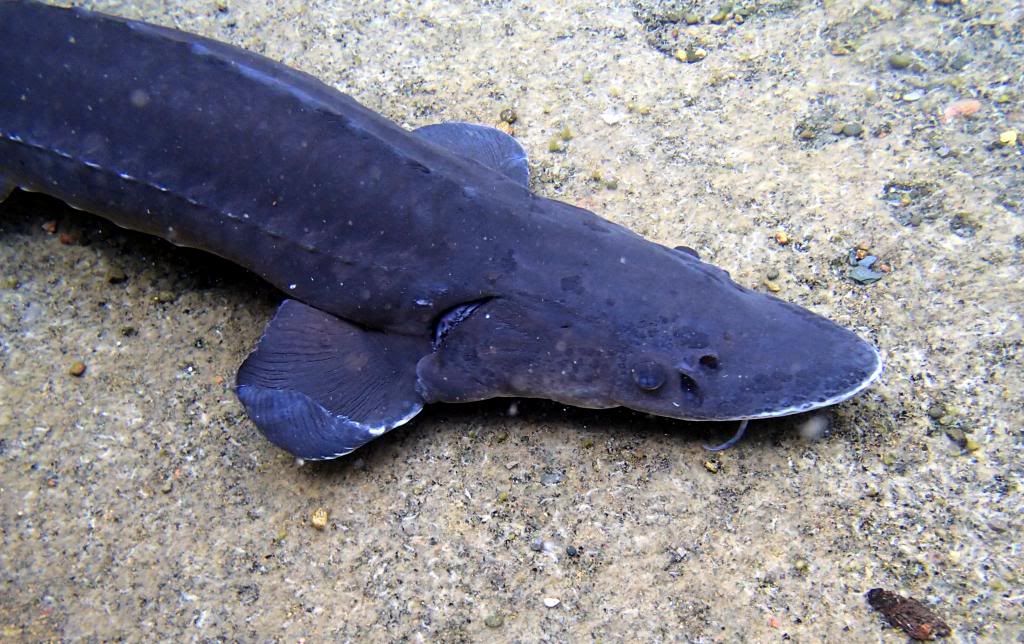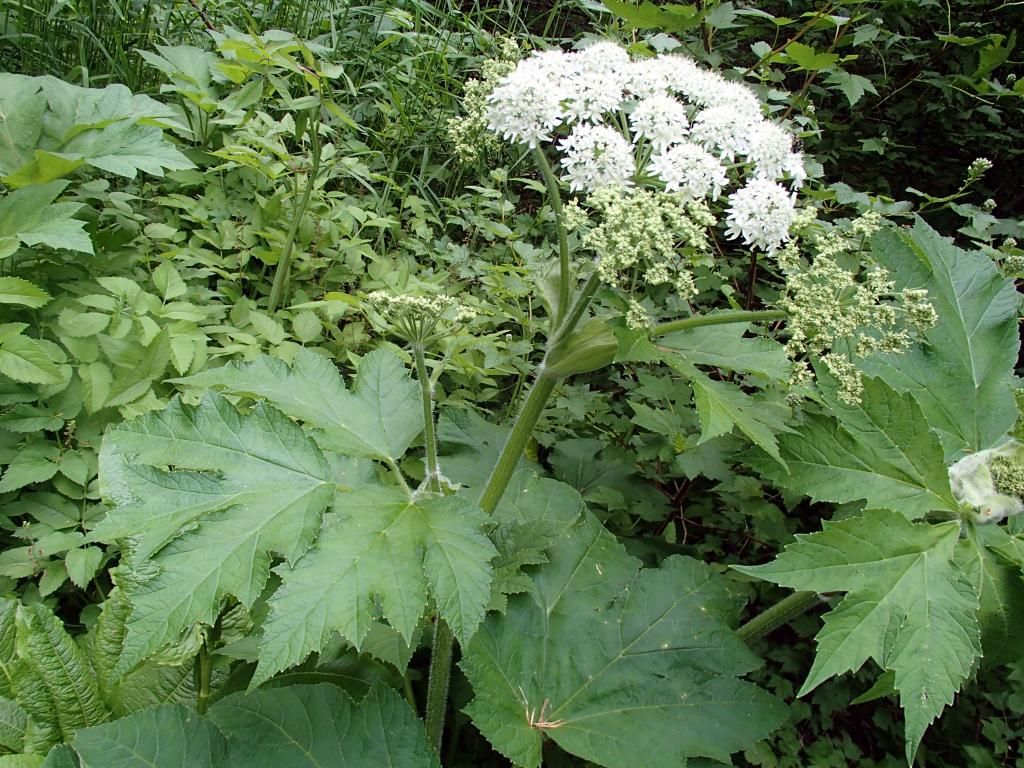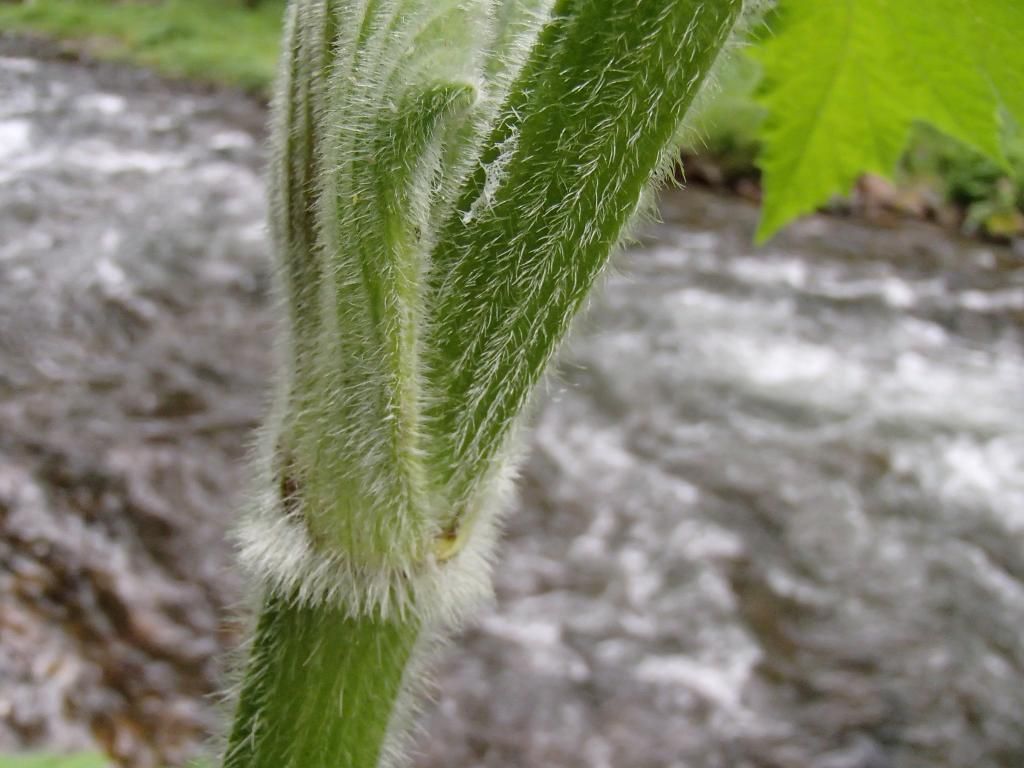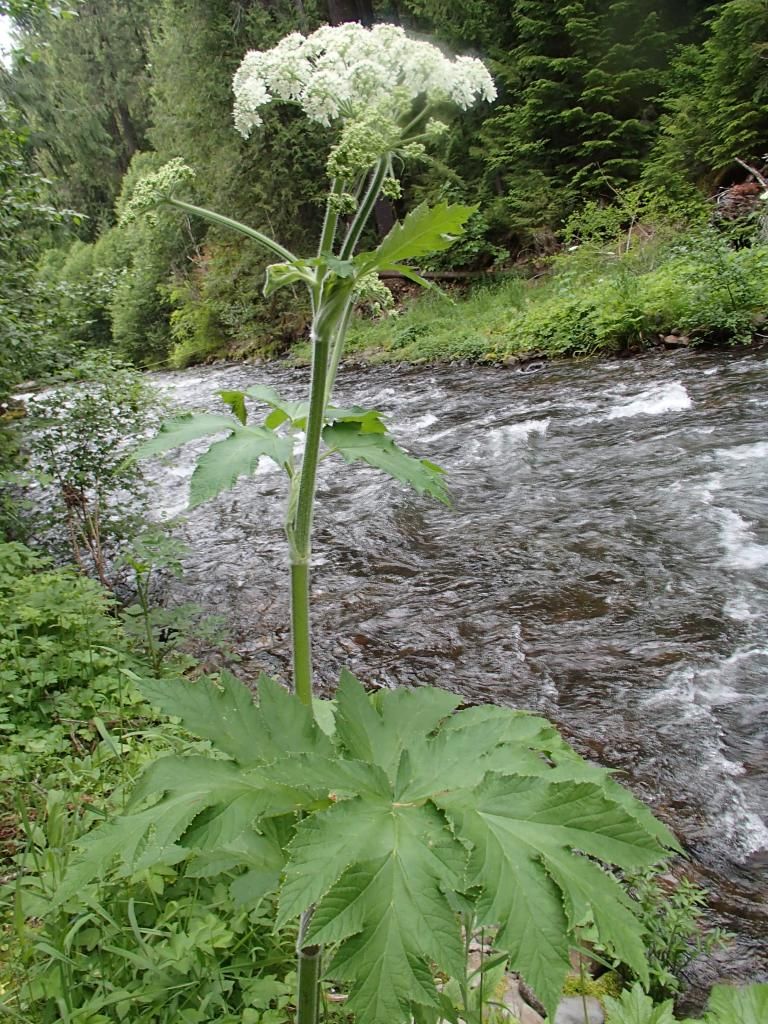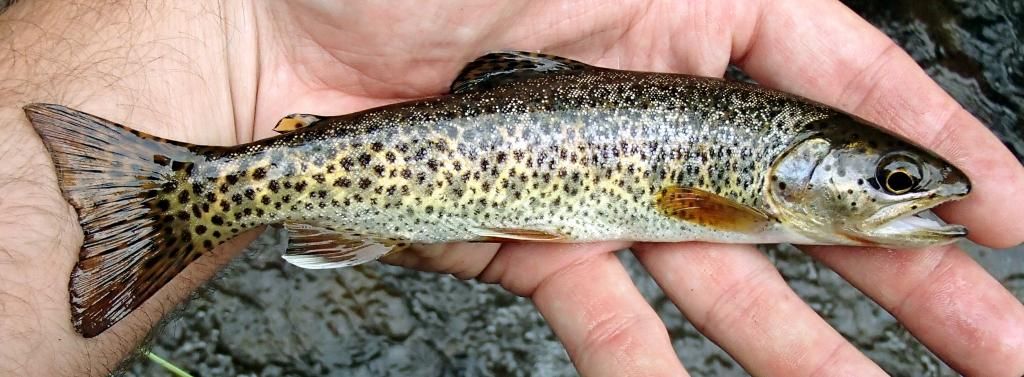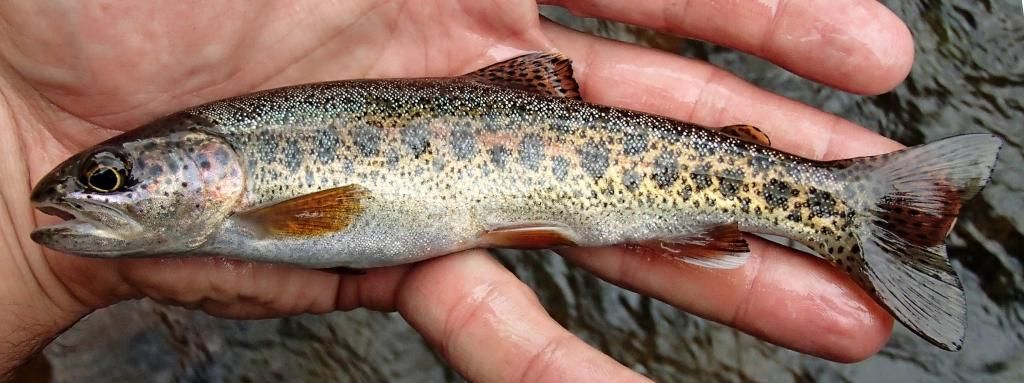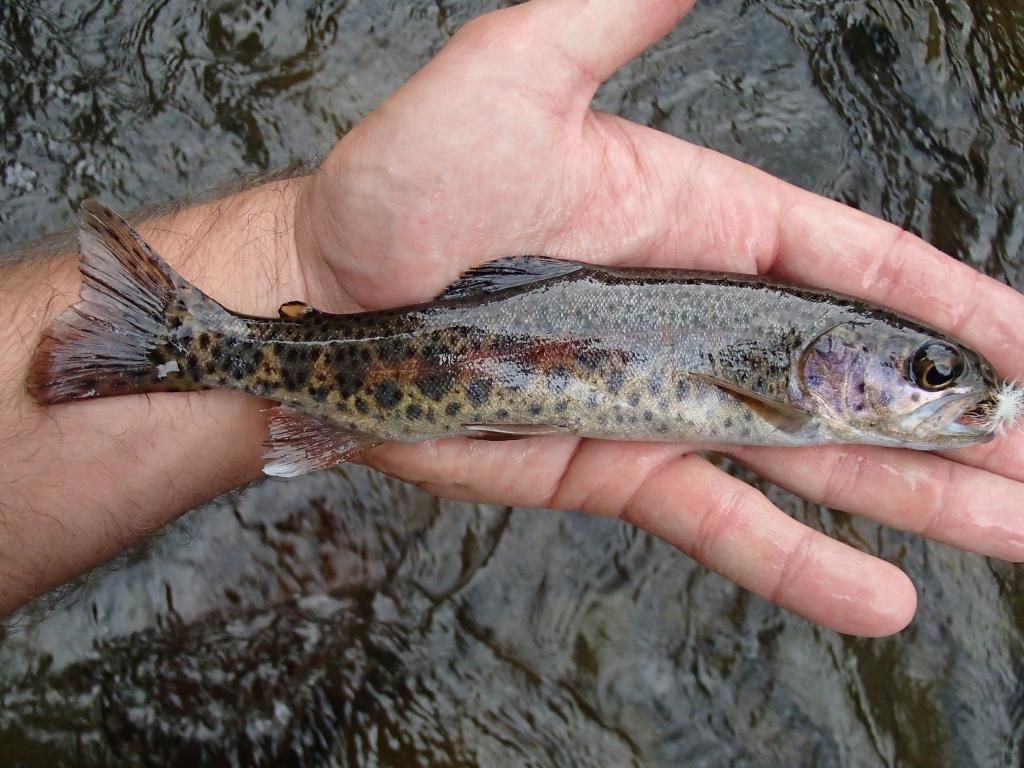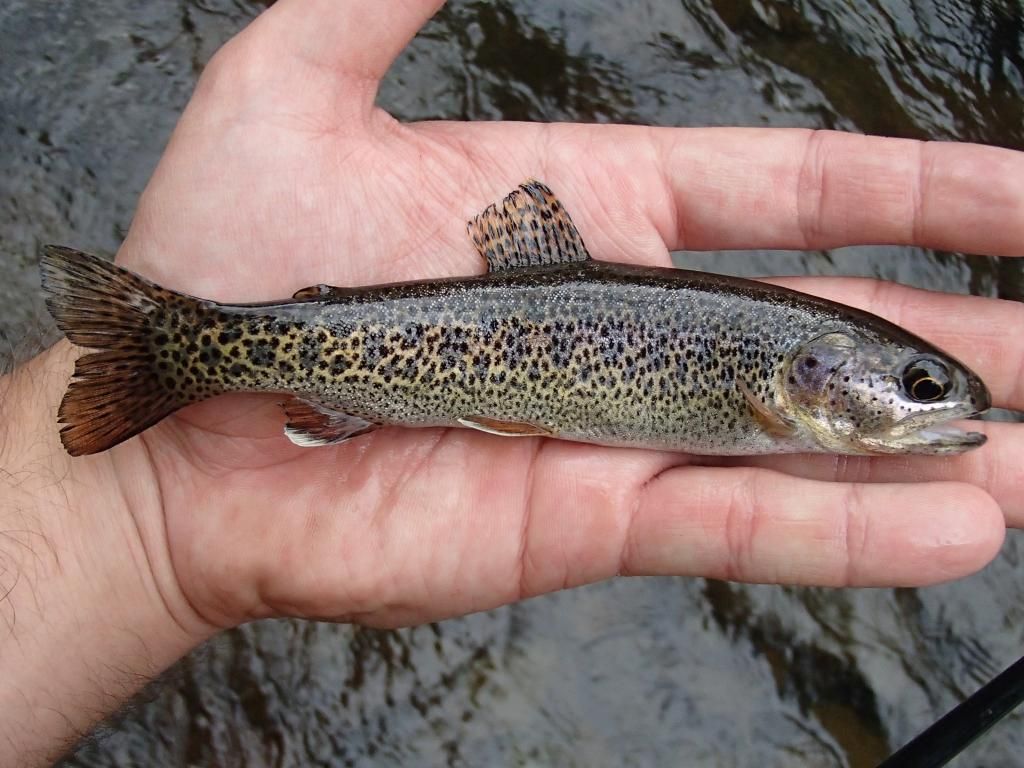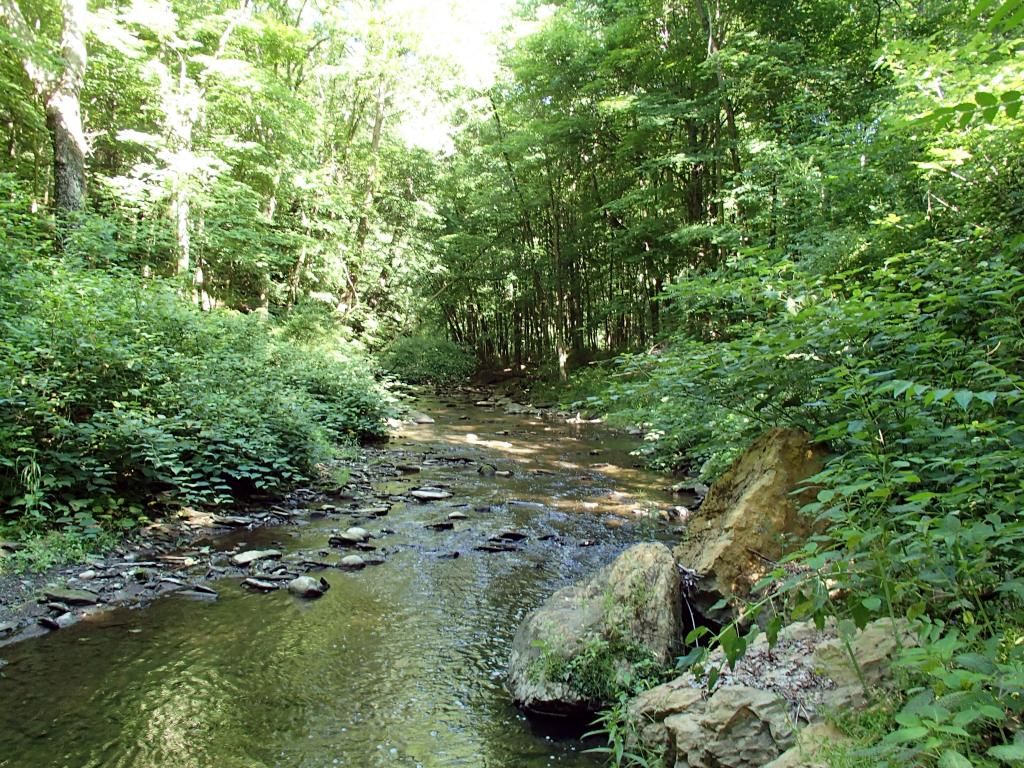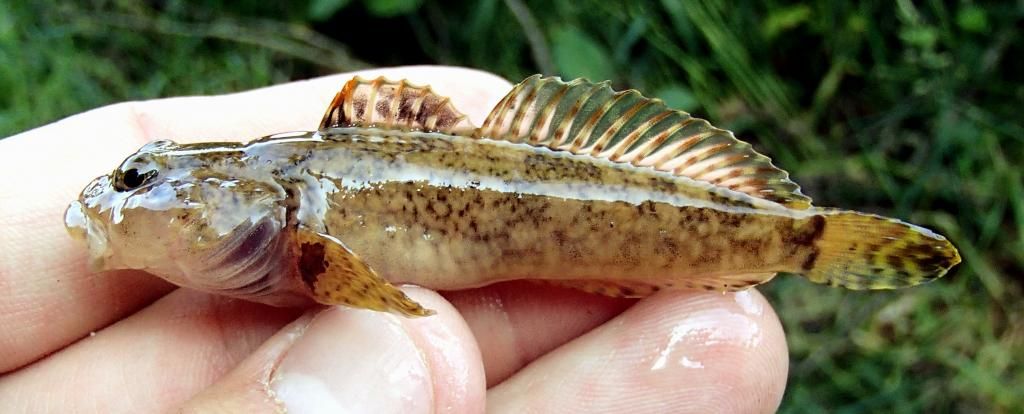For my last National Rivers and Streams Assessment training session, I headed to Portland, OR. Having never spent time in the Pacific Northwest, I decided to extend my stay so I could explore the area after my work commitments were completed. My colleague, Dave, and I ended up wetting our boots in six different streams during the course of the week. Most of the time, I was in awe of the beauty of the streams and the dramatic backdrops provided throughout the numerous state/national parks and mountain ranges.
On our first day, we arrived in Portland early to set up for the training session to be held the next morning. As Dave and I are both avid fly fishermen, we chose to spend the afternoon in search of coastal cutthroat trout (Oncorhynchus clarkii clarkii). For those not familiar with the coastal cutthroat trout, it is the only anadromous species/sub-species of cutthroat trout. This species can be found in coastal areas from northern California to southern Alaska. As adults, this species lives in estuaries and rarely ventures far into the open ocean. Between January and June (depending on latitude), adults ascend streams (most often their natal stream) to spawn. After spawning, the adults migrate back downstream to the estuary. With a few tips from the staff at a fly shop in Portland, we were off to the lower end of the Wilson River, directly west of Portland. The Wilson River begins in the Northern Oregon Coast Range Mountains, and flows southwest for 33 miles until emptying into the Tillamook Bay of the Pacific Ocean. Much of the river runs through the temperate rain forest of the Tillamook State Forest. The scenic State Route 6 provided views of the huge Douglas fir trees and ferns of the forest, in addition to excellent access to the river. By accessing the lower end of the river (perhaps 10 miles upstream from the mouth), Dave and I were hoping to intercept some hungry coastal cutthroat trout making their way back to Tillamook Bay.
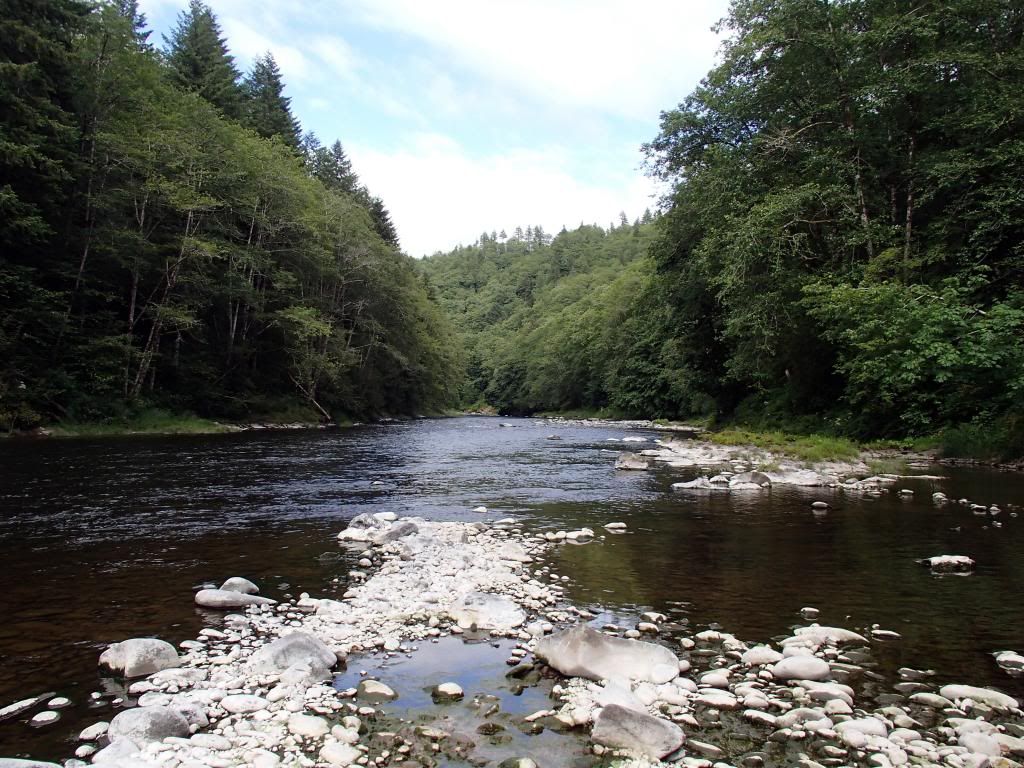
Dave and I waded the river and plied the water in search of trout. Standing on large rocks on the stream banks allowed us to see down into the bottom of the pools; some of which appeared to be well over 10 feet deep. While standing atop one of the large boulders, I noticed a creature stirring in a shallow backwater area. Reaching down, I scooped up a rough-skinned newt (Taricha granulosa):
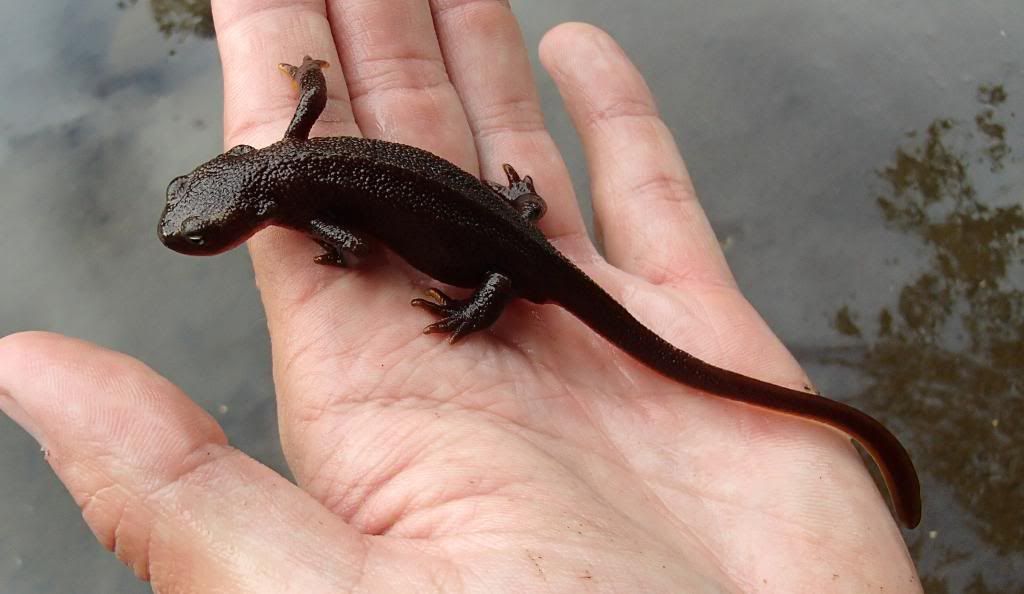
It appeared to be an adult in its aquatic phase. This newt was likely returning to the water in search of a mate. Wading along the banks, I found five or six more newts in about 100 yards of stream length. After doing a bit or reading about this species (after handling one, as shown in the picture above), I found out they exude a neurotoxin from their skin...luckily, the literature indicates the toxin is only harmful when ingested. Catching newts proved to be a lot easier than catching fish at this spot on the river. The clear waters seemed mostly void of fish, except for a few small fish cruising the shoreline. Out of curiosity, I took a few casts towards the group of small fish. After a few splashy attempts at my dry fly, one of the small fish became hooked. Although not one of the "20 pounders" this river is known for, I was excited to see my first native chinook salmon (Oncorhynchus tshawytscha):
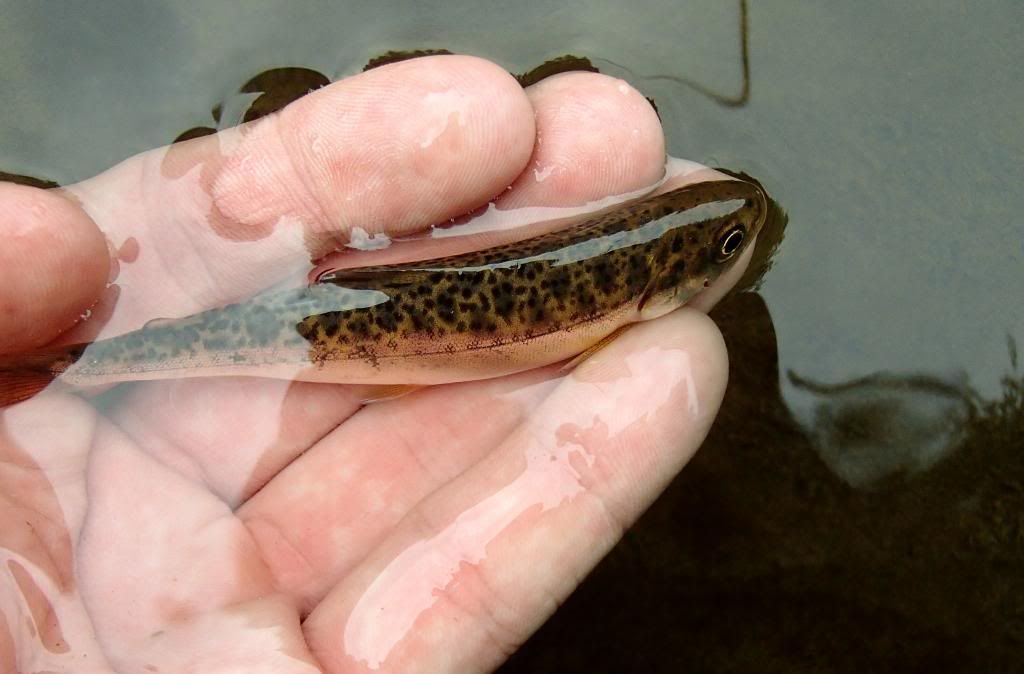
Dave and I waded that stretch of the Wilson River until the sun was low in the sky. I ended up spending more time sitting along the bank, watching the river, and listening to the sounds of the forest than fishing. During our short walk back to the car, we spied a park of elk on the side of the hill, approximately 60-70 yards from the car...my first elk sighting, and a pleasant end to the day. Although we didn't capture the coastal cutthroat trout we were after, we didn't let it dampen our spirits, as we knew we had the rest of the week ahead, and had a great first day in the Pacific Northwest.


